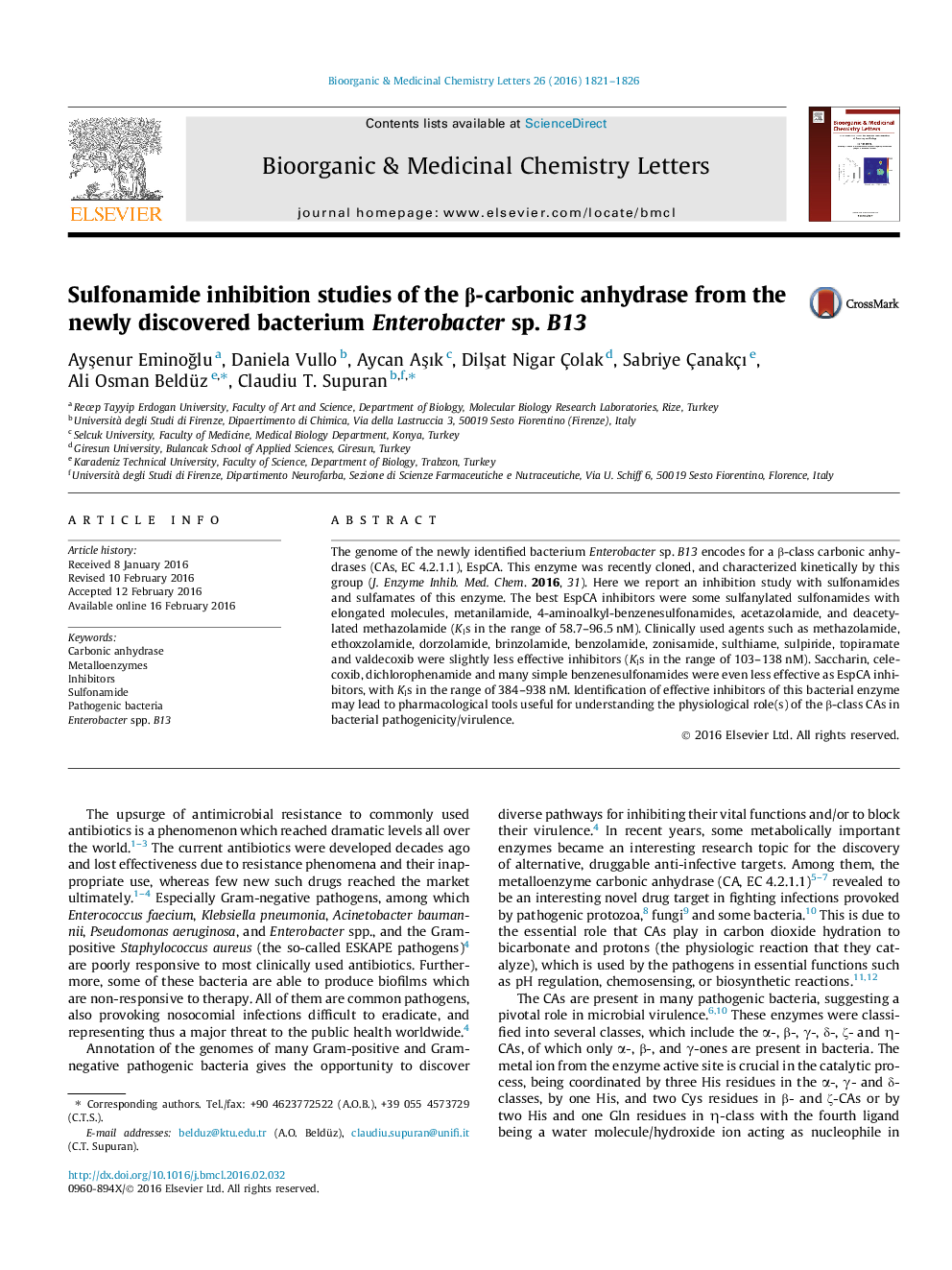| Article ID | Journal | Published Year | Pages | File Type |
|---|---|---|---|---|
| 1370030 | Bioorganic & Medicinal Chemistry Letters | 2016 | 6 Pages |
The genome of the newly identified bacterium Enterobacter sp. B13 encodes for a β-class carbonic anhydrases (CAs, EC 4.2.1.1), EspCA. This enzyme was recently cloned, and characterized kinetically by this group (J. Enzyme Inhib. Med. Chem. 2016, 31). Here we report an inhibition study with sulfonamides and sulfamates of this enzyme. The best EspCA inhibitors were some sulfanylated sulfonamides with elongated molecules, metanilamide, 4-aminoalkyl-benzenesulfonamides, acetazolamide, and deacetylated methazolamide (KIs in the range of 58.7–96.5 nM). Clinically used agents such as methazolamide, ethoxzolamide, dorzolamide, brinzolamide, benzolamide, zonisamide, sulthiame, sulpiride, topiramate and valdecoxib were slightly less effective inhibitors (KIs in the range of 103–138 nM). Saccharin, celecoxib, dichlorophenamide and many simple benzenesulfonamides were even less effective as EspCA inhibitors, with KIs in the range of 384–938 nM. Identification of effective inhibitors of this bacterial enzyme may lead to pharmacological tools useful for understanding the physiological role(s) of the β-class CAs in bacterial pathogenicity/virulence.
Graphical abstractFigure optionsDownload full-size imageDownload as PowerPoint slide
